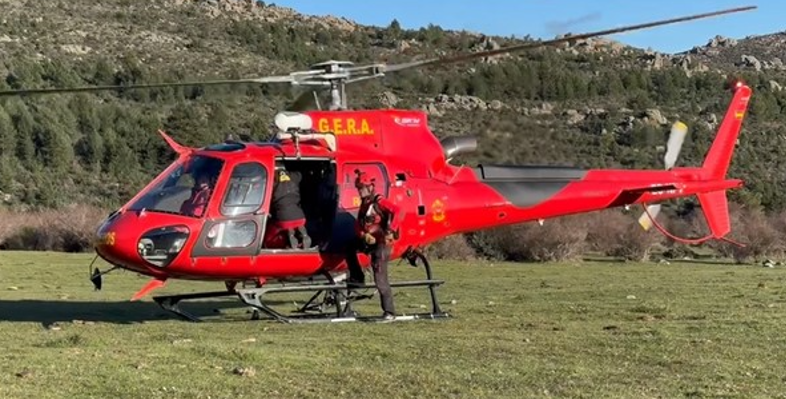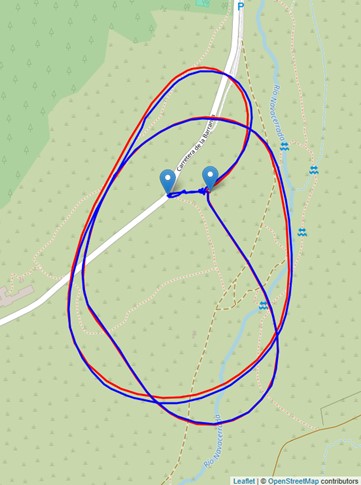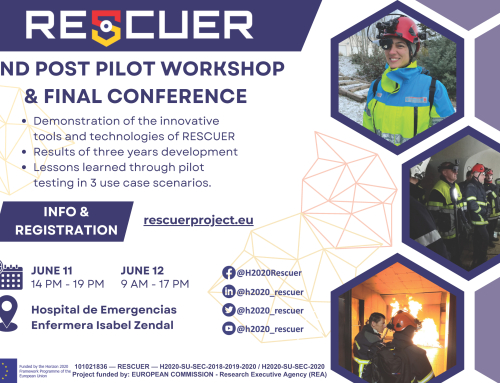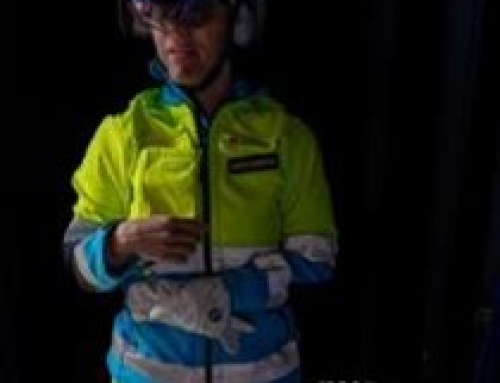At the second Navacerrada pilot, Spain, we tested the GNSS-tool during a helicopter flight.
- Two versions of the tool were tested: i) the GNSS-tool was fixed in the helicopter during the flight with antenna at the front-window, and ii) a test-person entered the helicopter with a GNSS-tool, where the antenna was mounted on the helmet.
- The helicopter flew two circles of about 500m radius after the test-person entered.
- The roof and the engine of the helicopter did not really disturb the results while sitting in the helicopter. This makes us confident that the tool worn by a first responder with antenna on the helmet provides accurate positions also inside a helicopter.

First responder equipped with RESCUER tools entering the helicopter.
Trajectory of the helicopter flight measured with the fixed GNSS-tool with antenna at the front window (red) and the trajectory of the test-person with antenna on the helmet (blue). Both trajectories fit to each other and the GNSS-tool with antenna on the helmet provides similar results as the fixed tool. The Figure was created by using OpenStreetMap.








